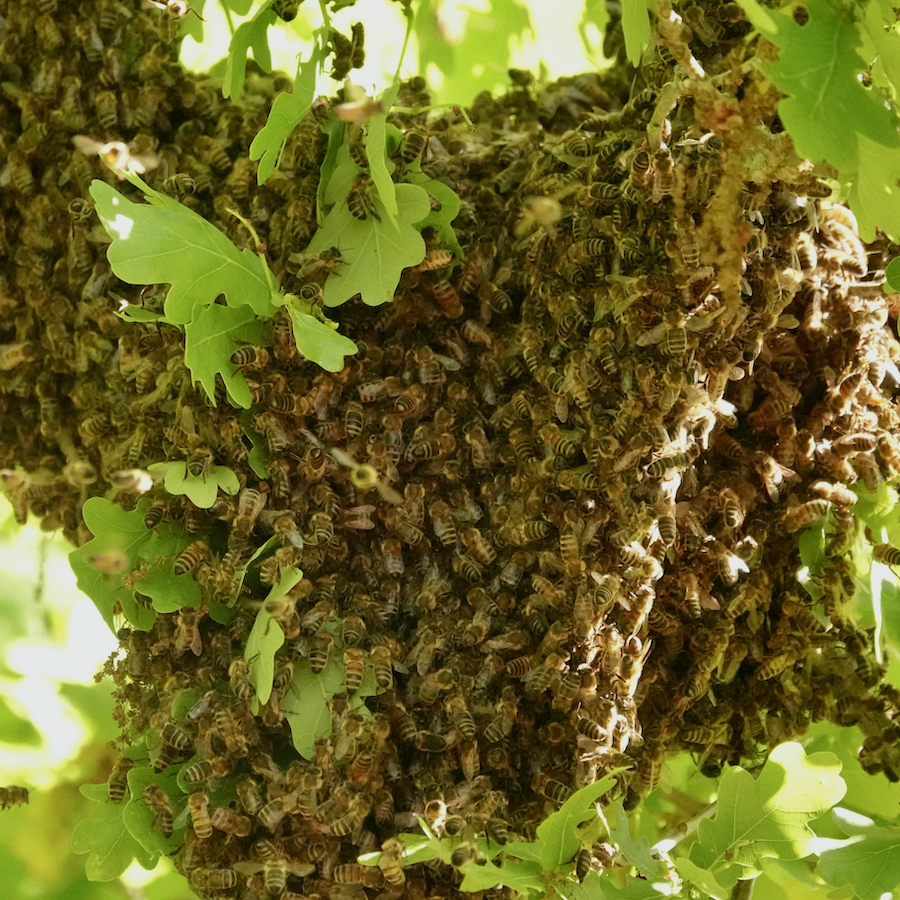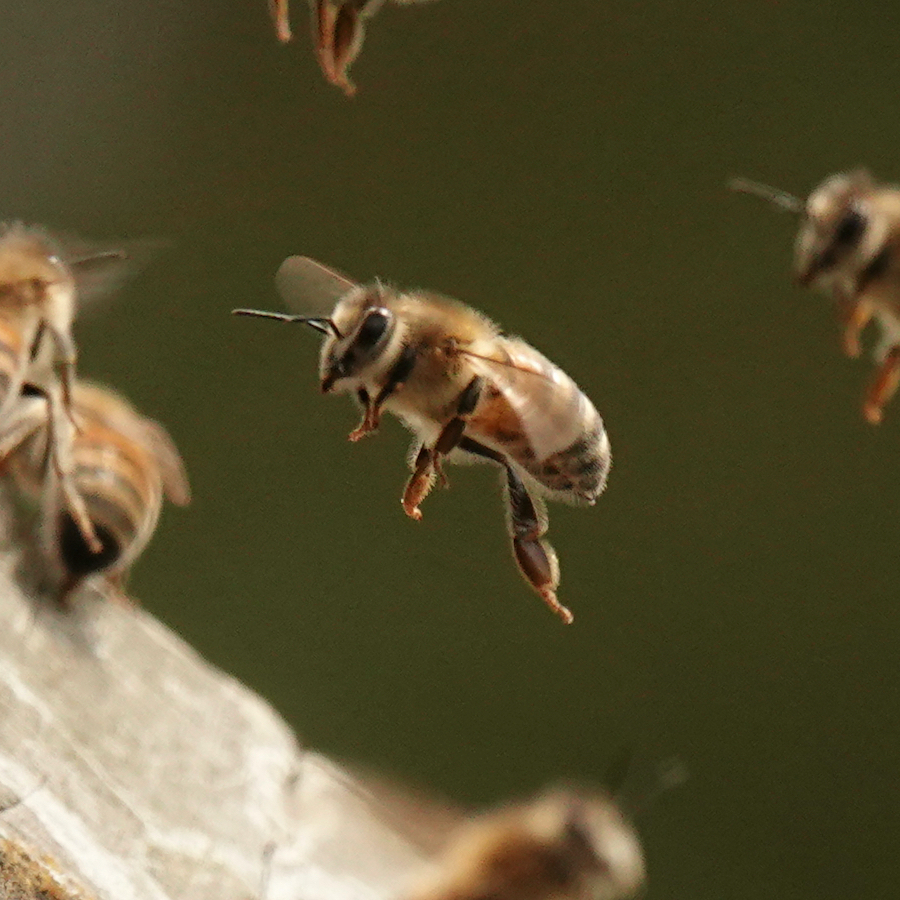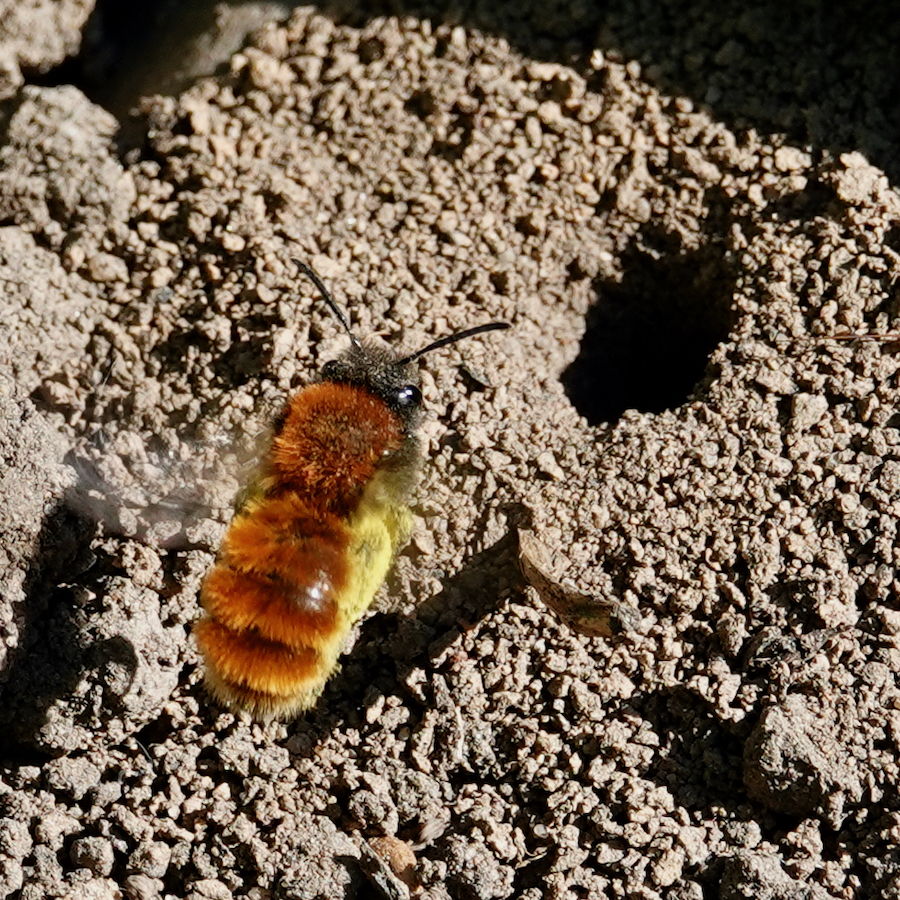As soon as there is a bit of sunshine in the garden the bees almost always put in an appearance. The commonest bees these days are Honey Bees. These are an introduced species that live mostly in artificial hives although occasionally a new queen will lead a swarm away from a crowded hive to settle in a suitable tree, as shown in the first photograph. They are easily recognised by their black and gold abdomens, and their broad back legs with long black hairs that form the pollen basket or corbicula. When they are out foraging, the worker bees collect pollen from various plants and accumulate it on their pollen basket before returning to the hive to feed the young. Honey bees rely entirely on pollen for their protein requirements and nectar for water and carbohydrates. During the collection of these, they transfer pollen to other flowers and are thus responsible for a large proportion of the pollination of our flowering plants including many of our food species. Each hive can contain up to 50,000 worker bees and a single queen.


Although we have only one species of Honey Bee in this country, there are nearly 250 species of solitary bees. As the name suggests, these do not live in colonies – each female bee builds her own nest which she stocks with pollen and nectar for her own offspring. These nests vary in structure including tunnels in the soil, hollow plant stems, nests built out of mud or clay, and homes built in wood. One of the most beautiful of the mining bees turned up in my garden recently, a Tawny Mining Bee. They are covered in red hair on the back of their thorax and abdomen, particularly bright in the female shown here. After mating the female digs a tunnel 200-300 mm deep (8 – 12 inches) in soft soil, leaving a pile of soil around the entrance hole. The mine has brood cells branching off the main shaft and she fills each cell with nectar and pollen before laying a single egg in it. The larvae quickly hatch and pupate in a few weeks before enduring a long wait in the tunnel before emerging the following spring.

Bees are always thought of as busy, hard-working insects, but that is not true of all of our species. There are 34 species of nomad bees in this country and they are cleptoparasites, laying their eggs in the nests of mining bees. When the nest is unoccupied, the nomad bee quickly enters the host burrow and lays a single egg. When the nomad larva hatches out, it quickly kills the resident egg or larva with its large mouthparts before eating the store of nectar and pollen supplied by the host bee. Nomad bees are readily distinguished from most other solitary bees, although they are often mistaken for wasps with their virtually hairless, black and yellow striped bodies. Gooden’s Nomad Bee is one that is commonly found in our local gardens and can be identified by the yellow spots on its thorax and yellow stripes on its abdomen. The antennae and legs are orange and it is common from April to June.

Bees are an essential part of our lives, responsible for the pollination of most of our flowering plants including many of the food plants we rely on. The indiscriminate use of pesticides has reduced the populations of all of our bee species, some to a critically low level. Although some of the worst pesticides have now been banned the continuing overuse of these chemicals will ensure that bee populations remain low. I would urge all of you to abandon pesticides and plant a variety of flowers to help our bees and keep our gardens buzzing.
© The Journal 2023